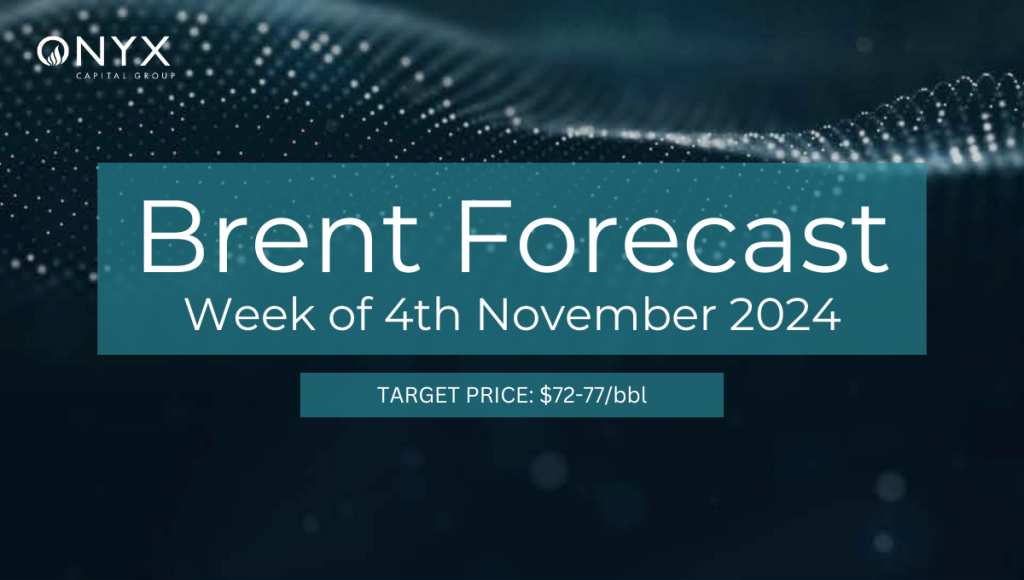Brent crude futures have been trading higher at the start of November, with prices in the Jan’25 contract trading above $74/bbl as of Monday morning. Price action was supported as market participants remain on edge over the conflict in the Middle East, while OPEC+ has announced a delay to their output increases until the end of December. We expect prices to end the week between $72-77/bbl, although we acknowledge that volatility ensuing from the US presidential election result may lead to price prints outside this range. The key factors this week are:
- US Election on 5 November
- Middle Eastern geopolitical risk
- Market conditions and macroeconomics

This week, the US election takes centre stage, and either outcome in the ‘coin-toss election’ will have vast implications for the financial markets. Focusing on the oil market, a Harris victory might signal a continuation of the status quo and more certainty for trade policy and international relations. In contrast, a Trump victory could radically shift the outlook for US economic and foreign policy. We think a Trump administration could be net bearish for crude prices. The prospect of drastically increased tariffs is dollar-supportive and may raise inflationary pressures and reduce interest rate cuts from the Fed.
A rising US dollar is bearish for oil prices, and the increased economic burden for both consumers and exporters industries may lead to weaker demand in the medium term. Meanwhile, Trump might attempt to play a balancing act against US foreign adversaries, with increased scrutiny and sanctions enforcement against Iran and Venezuela while pushing for peace talks between Russia and Ukraine. The outlook for supply and demand is uncertain, but the factors mentioned earlier suggest that a Trump victory is more likely to lead to downward pressure on oil prices.
The Middle East geopolitical risk remains firmly relevant in the context of the US election. The market’s relief following Israel’s retaliatory attack on 26 Oct was short-lived, as it came to light that Iran might launch an attack on Israel from Iraqi territory before the US election. This shows that regional tensions remain elevated, and such headlines will continue to generate volatility in oil prices. Israel’s recently dialled-down rhetoric was likely at the behest of the Biden administration ahead of the elections. According to a recent Standard Chartered report, there remains scope for expanded military action by Israel following the US election when the upside risk to oil prices is not an ‘immediate electoral concern’. Hence, the geopolitical situation warrants upside price risk and continued price volatility on fluctuating sentiment and new headlines.
Finally, macroeconomics will continue to play an essential role in driving sentiment in the oil market. Bearish market conditions have compelled OPEC+ to delay their tapering of voluntary cuts to the end of December. This comes from a combination of weak macroeconomic sentiment in China and Europe and robust non-OPEC supply growth, where the EIA reported that US crude output rose to a record 13.4mb/d in August 2024. The Fed will meet this week and is widely expected to cut interest rates by 25bps. While this has been priced in, the market will closely monitor further comments from Fed Chair Jerome Powell about the current market environment and its plans for future meetings – which could depend on the election winner.

